The Importance of Bank Reconciliation in Internal Control
Financial statements show the health of a company or entity for a specific period or point in time. The statements give companies clear pictures of their cash flows, which can help with organizational planning and making critical business decisions. So, to reconcile the amounts, you simply add the additions (interest income) and subtract the subtractions (bank charges and overdraft fees) to reach the bank balance. Ideally, the balance in your books is the same as the closing bank balance.
- By using software tools to automate bank reconciliation, businesses can focus on other critical tasks and make informed business decisions based on accurate financial data.
- Doing bank reconciliations regularly helps companies control their financial transactions and easily track errors and omissions.
- This transaction results in the bank’s assets decreasing by $1,000 and its liabilities decreasing by $1,000.
- The cash account balance in an entity’s financial records may also require adjusting in some specific circumstances, if you find discrepancies with the bank statement.
They also can be done as frequently as statements are generated, such as daily or weekly. Bank reconciliation statements ensure that payments were processed and cash collections were deposited into the https://quickbooks-payroll.org/ bank. Bank reconciliation statements are often used to catch simple errors, duplications, and accidental discrepancies. Some mistakes could adversely affect financial reporting and tax reporting.
Bank reconciliation is a subset of the monthly, quarterly, and yearly close process and is not generally done on its own. Accountants spend a lot of time on this step to ensure the checks are thorough and even minute errors are spotted. You need to adjust the closing balance of your bank statement in order to showcase the correct amount of withdrawals or the cheques issued but not yet presented for payment. At times, the balance as per the cash book and passbook may differ due to an error committed by either bank or an error in the cash book of your company. Thus, such a situation leads to the difference between bank balance as per the cash book and balance as per the passbook.
Which of these is most important for your financial advisor to have?
A bank reconciliation statement is a valuable internal tool that can affect tax and financial reporting and detect errors and intentional fraud. It’s near impossible to have confidence in your bank account balances when the person preparing the reconciliation and validating the amounts is bogged down by spreadsheets. If the company properly identifies all differences and adjusts them, there should be no remaining difference between the bank book and bank statement balances. If there are still some differences, these may be due to errors in either the two balances or the bank reconciliation process.
A bank reconciliation reconciles the bank statement with the company’s bank account records. A bank reconciliation consists of a business’s deposits, withdrawals, expenses, and other activities directly impacting your bank account during a particular period. The purpose of this comparing and matching process is to ensure that discrepancies are identified and corrected. It is common for there to be exceptions each period, or transactions recorded in one place but not the other. The company found there are $3,000 deposits in transit and $2,000 outstanding checks. As mentioned above, deposits in transit are cheques that the bank has not cleared yet.
If a company has more than one bank account in the same or different banks, it will receive multiple bank statements for each account. Similarly, it is a good practice for companies to maintain a separate bank book for each corresponding bank account. Miscellaneous debit and credit entries in the bank statements must be recorded on the balance sheet. If there are any differences, adjust the balance sheet to reflect all transactions. Cloud accounting software like Quickbooks makes preparing a reconciliation statement easy.
Typically, the difference between the cash book and passbook balance arises due to the items that appear only in the passbook. Therefore, it makes sense to first record these items in the cash book to determine the adjusted balance of the cash book. If you want to prepare a bank reconciliation statement using either of these approaches, you can take balance as per the cash book or balance as per the passbook as your starting point. Adjust the cash balances in the business account by adding interest or deducting monthly charges and overdraft fees. Compare your personal transaction records to your most recent bank statement.
Adjusting the General Ledger Balance
As a result, it is critical for you to reconcile your bank account within a few days of receiving your bank statement. A bank reconciliation should be prepared periodically because it is an important part of the internal controls of a company. Usually, most companies prepare bank reconciliations at the end of each month. Some small-sized companies prepare bank reconciliations once every 2-3 months.
Make Necessary Adjustments in the Balance as per cash book
The main reason a business should reconcile its bank statements is because you need to ensure your cash balance on the balance sheet is accurate. Regular bank reconciliations also help prevent fraudulent or unauthorized transactions from going unnoticed. Note that the balance per the bank statement is reconciled to the “correct” amount of cash; likewise, the balance per company records is reconciled to the “correct” amount. These entries serve to record the transactions and events which impact cash but have not been previously journalized (e.g., NSF checks, bank service charges, interest income, and so on). Therefore, the bank reconciliation process should be carried out at regular intervals for all of your bank accounts.
Reasons for Difference Between Bank Statement and Company’s Accounting Record
If the bank has made errors, notify them so that they correct the transactions. Bank reconciliation statements safeguard against fraud in recording banking transactions. Additionally, bank reconciliation statements brings into focus errors and irregularities while dealing with the cash. When you have an automated, integrated, and centralized bank reconciliation process, discrepancies between your books and the bank can be discovered on a more frequent basis than just at month end.
For instance, insurance premiums, telephone bills, rent, sales taxes, etc are directly paid by your bank on your behalf and debited to your account. Your bank may collect interest and dividends on your behalf and credit such an amount to your bank account. Therefore, such adjustment procedures help in determining the balance as per the bank that goes into the balance sheet.
Banks also make errors, and if the mistake can’t be identified, contact the bank. Starting with an incorrect opening balance can lead to errors in the reconciliation process. It’s essential to ensure how to become a certified woman that the starting balance is accurate before beginning the reconciliation process. In other words, the adjusted balance as per the bank must match with the adjusted balance as per the cash book.
You need to make sure that all the deposits you’ve recorded in the books reflect in the bank statement. Match each deposit from the debit side of your record to the credit side on the bank statements while ensuring that the amounts correspond. A bank reconciliation statement is a document that is created by the bank and must be used to record all changes between your bank account and your accounting records. It shows what transactions have cleared on your statement with the corresponding transaction listed in your journal. There are two main problems that can arise with a manual, spreadsheet-driven bank reconciliation process.
It’s possible there are additional transactions on the bank statement that you may not have in your records. Find out the reason for the additional or missing bank transactions before making adjustments. If so, these entries will not appear in the bank reconciliation statement prepared at the end of the current month.
When your accountants are working through multi-tab Excel workbooks that contain hundreds or thousands of line items that need to be reviewed, there is significant room for human error. And although the very purpose of the reconciliation is to validate bank account balance accuracy, fat-fingering or transposing a number, among other things, is not uncommon in spreadsheets. A bank reconciliation is a key control for many companies when, on an ongoing basis, accounting teams take necessary steps to substantiate cash on the balance sheet. Bank reconciliations verify the integrity of data between the bank records and a company’s internal financial records. It is even better to conduct a bank reconciliation every day, based on the bank’s month-to-date information, which should be accessible on the bank’s web site.




